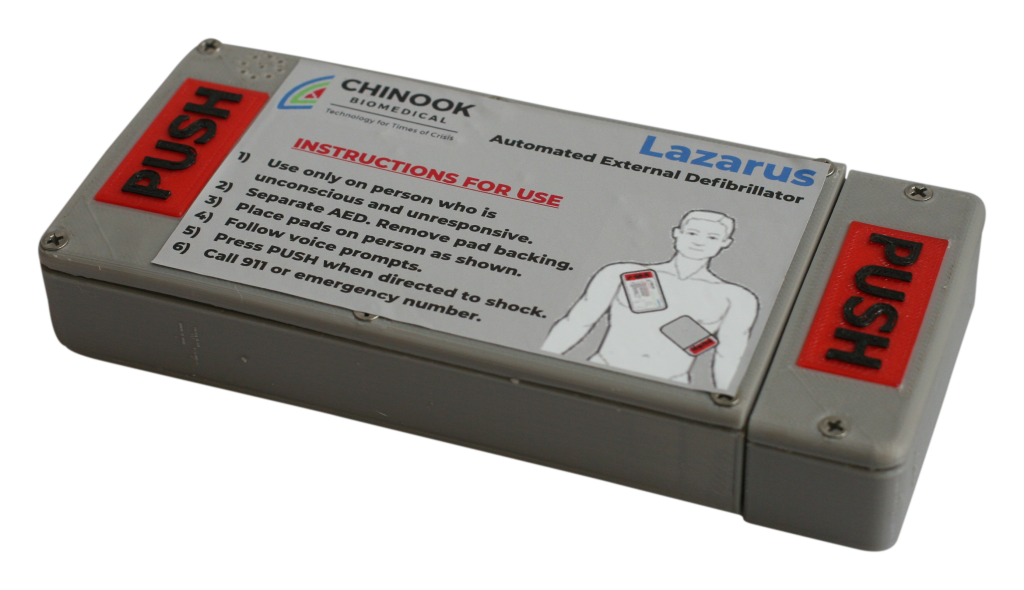Our
Products
Automated External Defibrillator
Sudden cardiac arrest is a leading cause of death. Fortunately, many of sudden cardiac arrests happen to otherwise healthy individuals outside of a hospital setting. Every second counts in returning the circulation to individuals suffering from sudden cardiac arrest. During many cardiac arrests, the heart moves chaotically, like shaken Jello, as a result of electrical signals in the heart that do not travel in a synchronous manner. This electrical rhythm is called “ventricular fibrillation” (VF). The only definitive treatment for VF is the application of a high voltage, high electrical current electrical shock. An automated external defibrillator (AED) is designed to provide such a shock to definitively end VF and return the patient to spontaneous circulation (ie. return of a pulse). As time progresses from sudden cardiac arrest, the chance that the individual can be successfully defibrillated decreases decreases by 10% per minute. For this reason, rapid access to an AED is imperative to increase the chance of survival for an individual suffering from sudden cardiac arrest.
Chinook Biomedical develops technology for times of crisis. Chinook Biomedical has developed the Lazarus I, an AED geared to the consumer market that is designed to be a fraction of the size- and a fraction of the cost of currently available AED’s. The Lazarus I accomplishes these goals by utilizing patent technology to reduce the transthorasic impedance (the amount of electrical resistance through the chest), thereby reducing the amount of electrical energy that needs to be stored within the AED.


Mechanical Ventilator
Individuals in respiratory distress often require mechanical ventilation to force air into their lungs. With the advent of the Covid crisis, Chinook Biomedical rapidly designed and prototyped the BiblioVent, a mechanical ventilator to be used under the FDA’s Emergency Use Authorization. The Bibliovent is a pressure control ventilator that provides pressure control and pressure support to patient triggered breathing. The Bibliovent has all of the features of a critical care ventilator including pressure support, fraction oxygen concentration and control of respiratory rate. However, it is designed to be constructed in mass quantities using commonly available parts.

